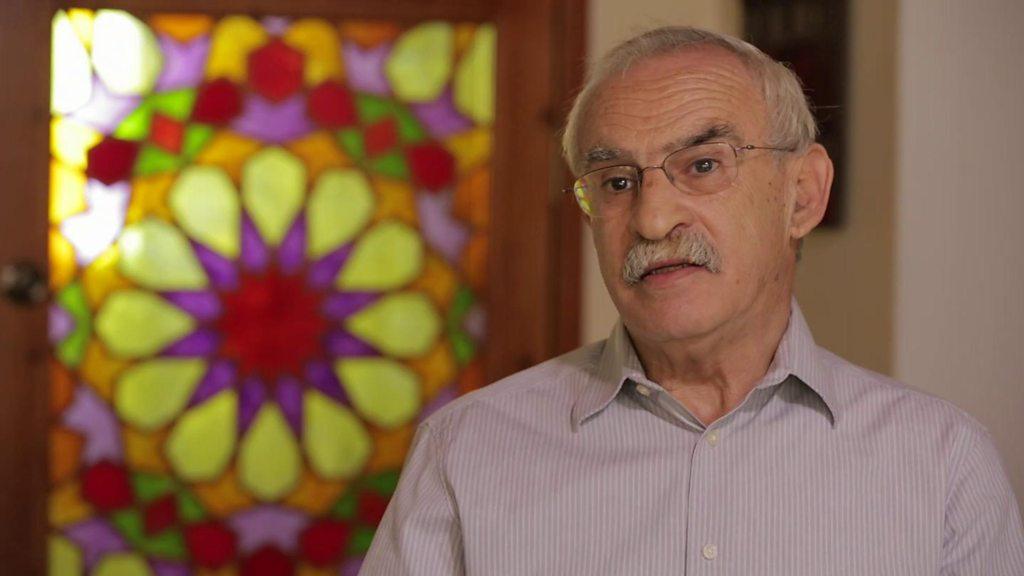Six Day War: Six ways the conflict still matters
- Published
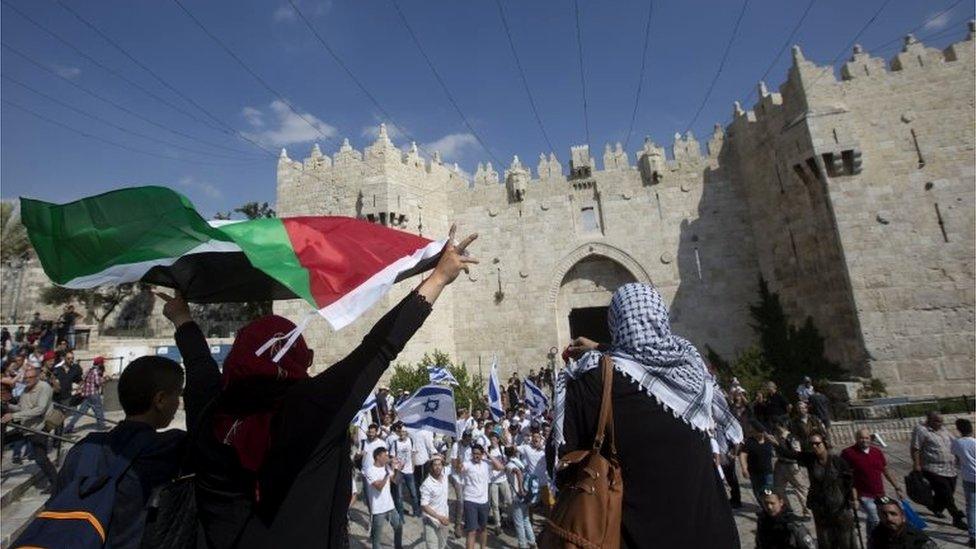
Israel was forged in, and defined by, war. Each armed conflict, large and small, left its mark.
But it is the shortest, the Six Day War of June 1967, that seems to resonate more than all the others. Why?

Occupation of the West Bank and Gaza
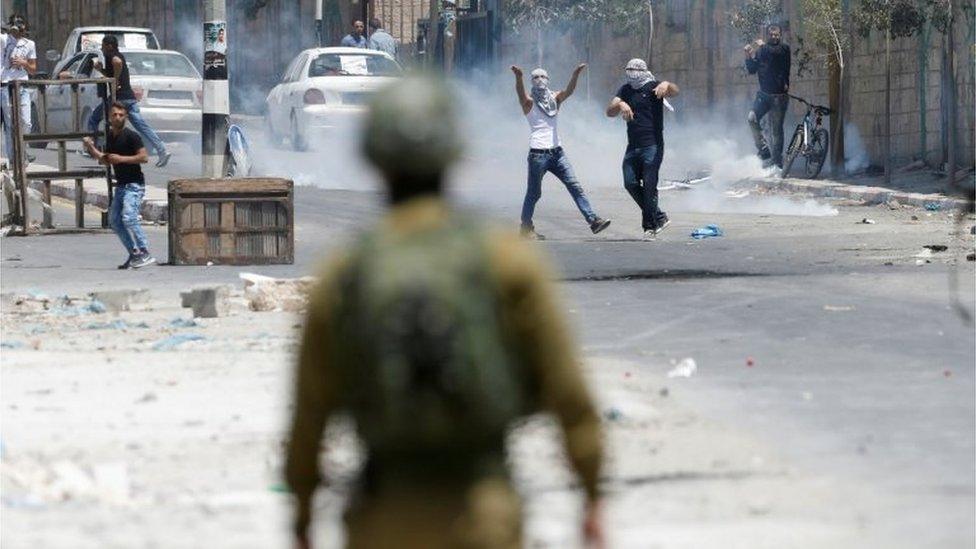
For many Israelis, this was a moment of euphoria. Their young state's military prowess had been amply demonstrated. The whole of Jerusalem, and all of Judaism's holiest places, were back under Jewish control for the first time in 2,000 years. Just 22 years after the Holocaust, the Jewish people's future now seemed secure, in their ancestral homeland. This was heady stuff.
For the Palestinians, it was a different story. More than a million Palestinian Arabs came under Israeli military rule and hundreds of thousands fled or were driven from their homes, some of them for the second time. For them, this was a grim sequel to the "Nakba" (Catastrophe) of 19 years earlier, when Israel gained its independence and more than 700,000 Palestinians became refugees in the fighting which surrounded it.

Jewish settlements
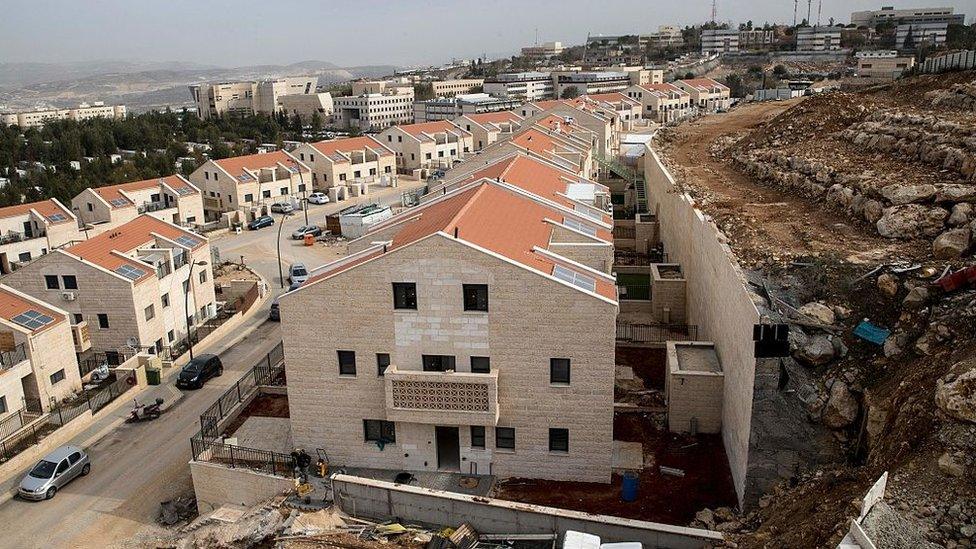
For a small number of Israelis, this was an opportunity not to miss. In 1968, a group of Jewish settlers, posing as tourists, checked into a hotel in Hebron, in the West Bank. They refused to leave until the government agreed to let them settle - temporarily - nearby.
It was the start of a process which led, over time, to the colonisation of large parts of the West Bank and Gaza Strip. By 2015, 386,000 settlers occupied 131 West Bank settlements. Until Israel withdrew from the Gaza Strip in 2005, 8,000 settlers lived there too.
In the eyes of the international community, Jewish settlements are illegal. Article 49 of the Fourth Geneva Convention prohibits an occupying power from transferring its citizens into occupied territory. Israel disputes its applicability and every government since 1967 has allowed settler numbers to rise. Settlers are well-represented by nationalist political parties which regard the West Bank as part of their Jewish birthright.
The settlement issue has long dogged efforts to achieve peace between Israel and the Palestinians. Some argue that the settlement enterprise is now so extensive and entrenched that it renders a viable two-state solution all-but impossible.

Fate of Jerusalem

The image of young Israeli paratroopers gazing up at the Western Wall in June 1967 came to symbolise a moment of national redemption. Ever since then, Israel has regarded the whole of Jerusalem as its unified capital.
But 50 years after the Six Day War, the city remains deeply divided. There are almost no mixed neighbourhoods. Development in Arab areas of East Jerusalem has been severely constrained. The demographic balance has been dramatically altered by the arrival of more than 200,000 Jewish residents.
Palestinians, like Israelis, see Jerusalem as their capital, but the city's 300,000 Arab residents are all but cut off from the West Bank by Israel's barrier construction and a series of large Jewish neighbourhoods built on land captured in 1967.
Jerusalem represents the concentrated heart of a conflict which mixes land, religion and politics. Its ancient sites can still inspire the sense of awed reverence depicted in David Rubinger's 1967 photo, an image iconic to Jews around the world. But they also serve as magnets for intolerant nationalism, laced with fear and prejudice. Difficult instincts to overcome.

Peace with Egypt/Jordan

The Israeli cabinet held long, anguished discussions after the war about what to do with the territories now under its control. No formal peace offer was ever made and, at a summit in Khartoum in September 1967, humiliated Arab leaders declared there would be "no peace, no recognition and no negotiation with Israel."
But 10 years later, after another Arab-Israeli war, Egypt's President Anwar Sadat became the first Arab leader to visit Israel, initiating a peace process that led to a peace treaty in 1979. Israel withdrew from the Sinai Peninsula, which its troops had captured in the Six Day War.
The Egyptian leader paid a heavy price. His fellow Arab leaders, shocked that he had chosen bilateral relations over pan-Arab solidarity, turned their backs on him. And, on 6 October 1981, Sadat was assassinated by members of Egyptian Islamic Jihad.
The start of an Israeli-Palestinian peace process, in the early 1990s, made it easier for Jordan to follow Egypt's example. Jordan had already renounced its claim to the West Bank and East Jerusalem, so the treaty signed in 1994 had no territorial implications, other than minor adjustments.

Peace process

This remains the central unresolved legacy of 1967. Israelis and Palestinians have sat down countless times but have never managed to reach a final deal.
The stumbling blocks have simply proved insurmountable. Israeli settlements have gradually eaten away at the territory in question. Acts of Palestinian violence, including suicide bombs aimed at cafes and busses, have convinced many Israelis they have no partner.
To make matters worse, both sides have experienced profound political division.
In 1995, the Israeli prime minister, Yitzhak Rabin, suffered the same fate as Anwar Sadat: gunned down by a religious zealot, two years after shaking hands with Palestinian President Yasser Arafat on the White House lawn.
For their part, the Palestinians have been deeply split for over a decade, between a PLO-dominated Palestinian Authority, willing to negotiate with Israel, and an Islamist militant movement, Hamas, which still says it wants to liberate "all of Palestine".

Golan Heights
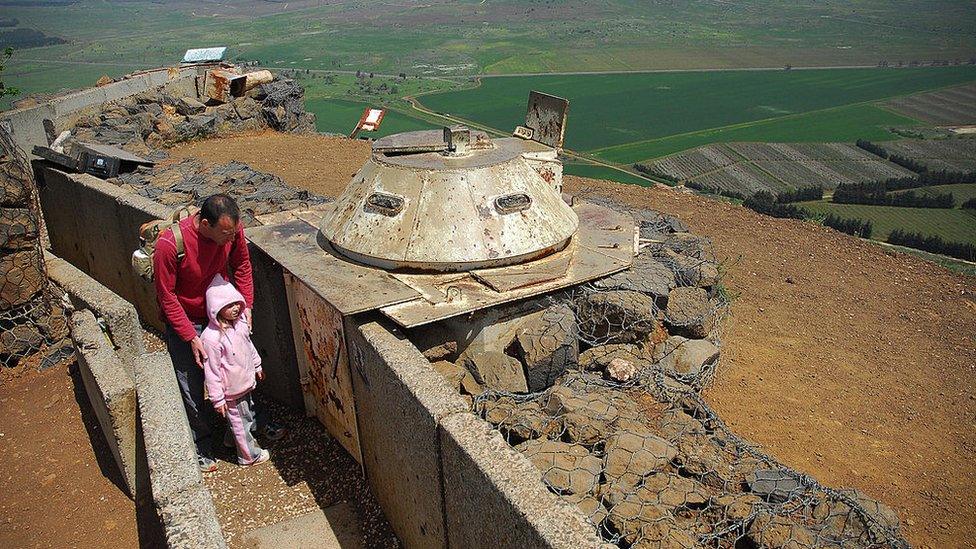
Israel's capture of the strategic basalt plateau known as the Golan Heights represented the final Arab humiliation of the Six Day War. Syria, believing that Egypt was in the process of defeating Israel in the south, launched its own attack. It was a costly mistake. Israel counter-attacked. Around 100,000 Syrians fled or were driven out. In 1981, Israel passed a law which annexed the area in all but name, and has not been recognised internationally.
While less central to Israeli identity than Jerusalem or the West Bank, Jewish settlers have gradually made their homes and livelihoods on the Golan. By 2014, there were around 20,000.
Peace efforts have been fitful. In 2000, hopes were raised when Syria's ailing president, Hafez al-Assad (father of the current leader) agreed to meet US President Bill Clinton in Geneva. But the talks went nowhere, foundering on Syria's demands to return to its pre-1967 position on the north-east shore of the Sea of Galilee.
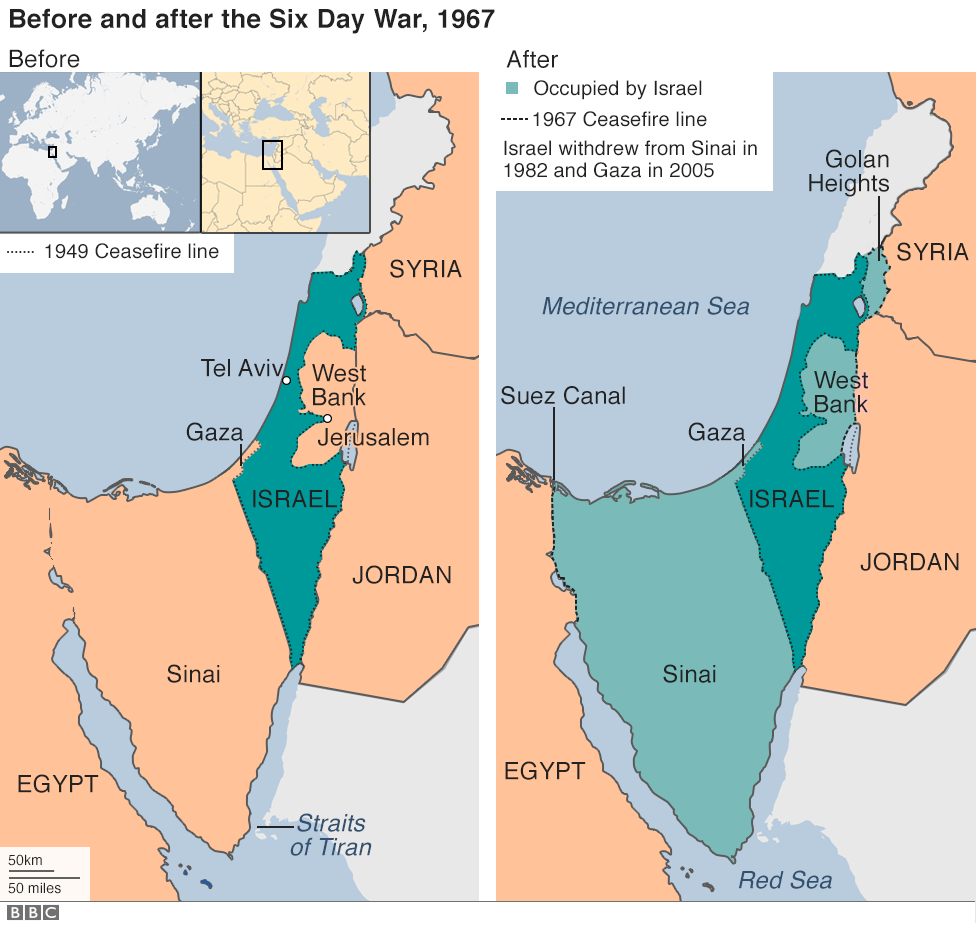
- Published5 June 2017
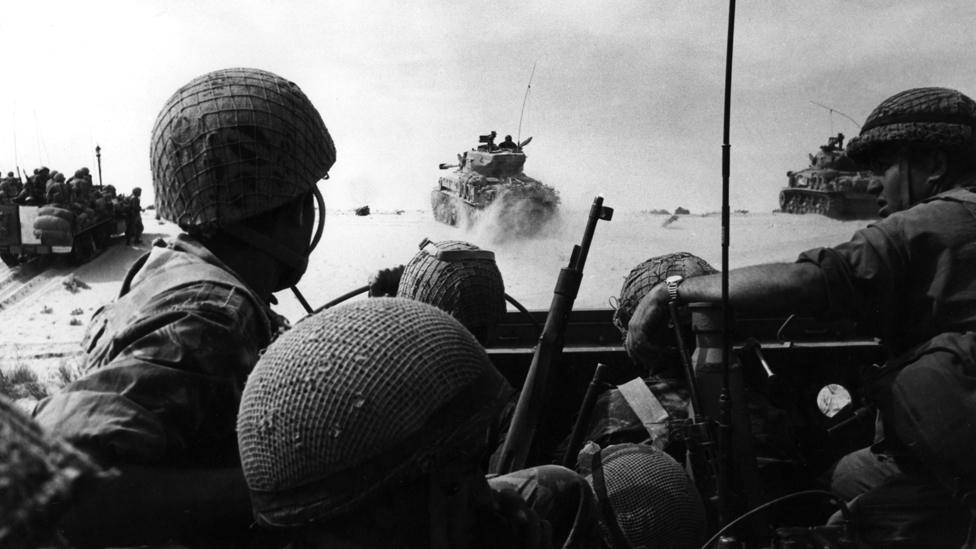
- Published4 June 2017
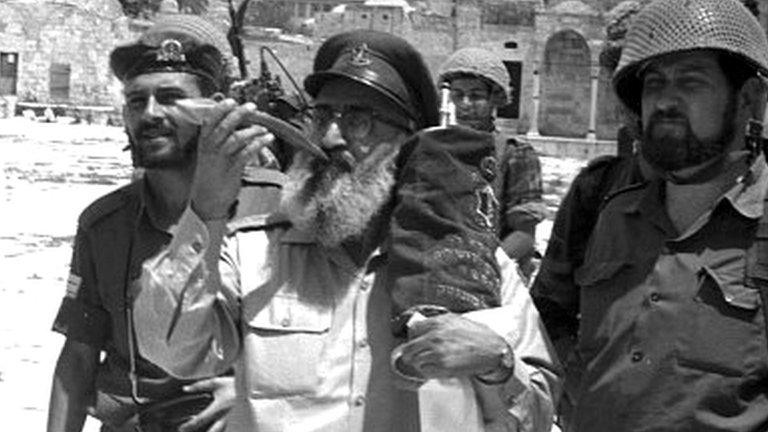
- Published4 June 2017
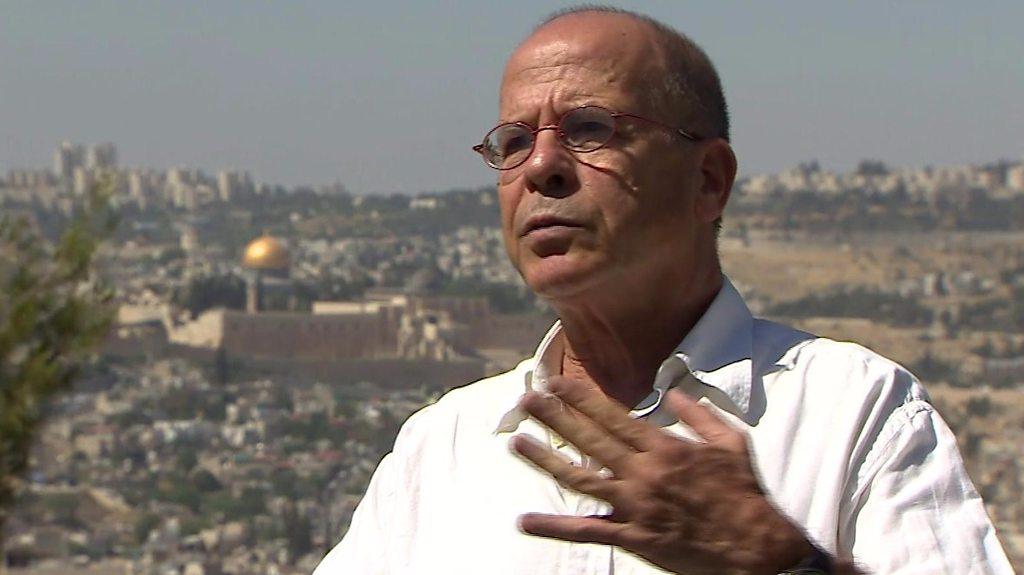
- Published4 June 2017

- Published4 June 2017
